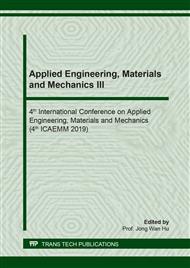p.7
p.12
p.16
p.21
p.26
p.31
p.37
p.44
p.50
Evaluating the Thermal Conductivity and Q-Max Properties of Quick Dry Inner Wears
Abstract:
Thermal property is an importance factor of quick dry inner wears. This study aims to evaluate the thermal property of women’s quick dry inner wears in the market with different market position (Brand A: online brand; Brand B: general market and Brand C: youth market). The thermal property studied in this paper included (i) thermal conductivity and (ii) Q-max value (warm/cool feeling). The thermal conductivity and Q-max values were measured according to the standard of KES-F7. Thermal conductivity analysis showed that Brand B was the optimal product, while Q-max results indicated that both Brand B and Brand A had the best product in terms of quick dry property.
Info:
Periodical:
Pages:
26-30
Citation:
Online since:
August 2019
Keywords:
Price:
Сopyright:
© 2019 Trans Tech Publications Ltd. All Rights Reserved
Share:
Citation:


